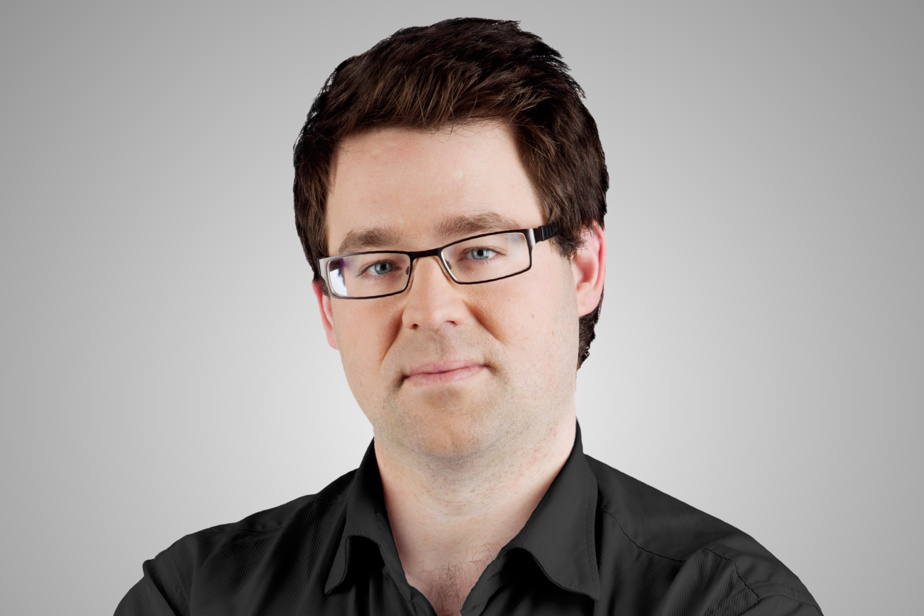“The solutions have been there for a long time, they have been under discussion. […] What it takes is political will. »
Who was talking about the Camillien-Houde route, which is not a safety model for cyclists?
Valerie Plante.
The head of Projet Montréal criticized the inaction of the Coderre administration in October 2017, the day after the death of Clément Ouimet on the Camillien-Houde road on Mount Royal1. The 18-year-old cyclist was killed descending the lane because a vehicle made an illegal U-turn in front of him.
Five years and eight months later, the Plante administration has still not definitively settled the security issues on the Camillien-Houde route.
In the summer of 2018, Montreal did a promising pilot project where car traffic was reduced by 80% on weekdays. We went from 10,000 to 2,000 cars per day on weekdays. Montreal then held a public consultation, and motorists expressed their discontent. The Plante administration backed down. She has been studying the issue ever since.
At least, the City has installed concrete walls on part of the lane, then bollards at the top of the lane at the height of the lookout. But the shoulders remain narrow and the car-bike cohabitation is anything but optimal.
On June 8, at the end of the afternoon, another car accident could have been fatal for a cyclist. A car hit the low wall that separates the two directions of the Camillien-Houde road, before crashing upside down near the trees along the road. Fortunately, no cyclist was descending Camillien-Houde at that time. On the other hand, a cyclist was climbing in the other direction.2 Without a low wall, the car could have hit him violently.
We had a narrow escape on June 8, but we can’t keep our fingers crossed forever.
The Plante administration will unveil its plan for Camillien-Houde Way and Remembrance Road this fall. She is still studying several scenarios. But the City’s budget documents are clear: “the space dedicated to car travel” will be reduced.
We want this plan to respect four principles:
1) Mount Royal is not a highway;
2) the safety of cyclists is paramount and must be improved;
3) we must improve public transport;
4) it is unrealistic and counter-productive to completely ban cars.
The decision of the Plante administration, which has done a lot for cycling in Montreal since its election but which dragged its feet in the Camillien-Houde file, will not please everyone.
Our vision: Mount Royal is the largest park in Montreal, and cars should not pile up there during rush hour. Agreed so that motorists can go to Mount Royal to enjoy our beautiful mountain. But we must put an end to the traffic caused by cars that only cross Mount Royal to save time.
This was the idea behind the 2018 pilot project, which banned “transit traffic”. You could access Beaver Lake from Remembrance, you could access the belvedere and Maison Smith from Camillien-Houde, but you couldn’t drive through the park. The only exception: buses and visitors to the cemetery. Otherwise, you had a hefty fine. We should be strongly inspired by this solution.
It’s not new that we discuss reducing the place of cars on Mount Royal. In 1990, the Montreal Consultation Office recommended preventing cars from crossing Mount Royal, as for the 2018 pilot project.
We are not the only ones to think this: in New York, cars have not crossed Central Park since 2018. Some New Yorkers have had to change their habits, but their lives have not collapsed.
Fewer cars improves safety for cyclists. But that doesn’t widen the path. There is not enough physical space for two bike lanes (uphill and downhill) and two road lanes. Vélo-Québec has an interesting suggestion: a separate lane for bikes and a lane for cars going up (they go at different speeds), and a single lane for bikes and cars going down (they go at the same speed ).
The Valérie Plante of 2017 is right: it will take “political will” to stop making Mount Royal an urban highway.
It is not normal that the largest park in Montreal is busier than several highways in Quebec.
Learn more
-
- 10,000
- Number of cars passing daily on the Camillien-Houde-Remembrance axis on Mount Royal, according to estimates for the year 2017
Source: Montreal Public Consultation Office
-
- 7300
- Number of cars passing daily on Highway 138 in Saint-Baie-Paul in 2022
Source: Quebec Ministry of Transport
-
- 9500
- Number of cars passing daily on Autoroute 55 between Drummondville and Sherbrooke, near Richmond, in 2022
Source: Quebec Ministry of Transport
